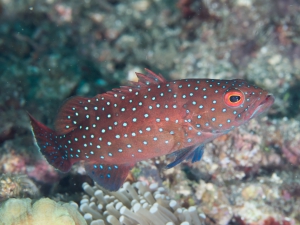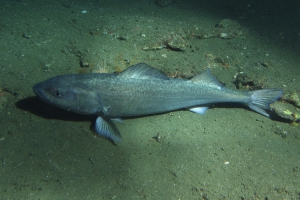The Importance of Connectivity in Marine Reserve Performance
By John Proefrock, SRC intern
Marine Reserves are essential parts of ocean conservation across the world. They provide protection for sensitive species and prevent overfishing in areas essential for the recovery of those species. The effects of overfishing include a massive disruption of the marine food web which can cause dangerous rises in primary producers due to the removal of predators in the upper trophic levels (Scheffer, M. et al 2005) The benefits of individual marine reserves have been shown, but reproduction patterns are variable between each reserve, which leads to fluctuations in the replenishment of each individual population. A large-scale study of the effect of a group of reserves on the population replenishment of highly pressured species had yet to be conducted, which is what the Australian Research Council Centre of Excellence for Coral Reefs aimed to accomplish. The study focused on the contribution of four marine reserves to the repopulation of coral grouper (Plectropomus maculatus) on the Great Barrier Reef. The investigation of the contribution of each reserve was performed by analyzing the age of sampled fish and determined that there were 6 distinct spawning events across the 4 reserves.

A coral grouper (Plectropomus maculatus), also known as the coral trout, is a common fish throughout Australian waters, including the Great Barrier Reef. (Source: Wikimedia Commons)
They calculated the population size and reproduction from each reserve using this data, along with underwater observations and genetic analysis. Using the collected data, it was clear that the individual reserves do generate a large proportion of the local population. However, the benefits were unpredictable in terms of timing and location.
The interesting finding from this study came when looking at the relationship between these spawning events. Each reserve produced a new generation (i.e., a cohort) at a different time. This asynchronous portfolio of reserves allows for a reliable replenishment of the coral grouper population on the Great Barrier Reef since the larval dispersion from each reserve benefits all the others. This is similar to the effect of diversifying a stock portfolio in order to protect against dips in the stock market. If there are multiple sources of coral grouper larva dispersing, then there will be more stable recruitment to the adult population. Overfishing has been an ever-present issue in marine since the 1950s, as the demand for oceanic protein has risen, and with it has come the overexploitation of these resources which may never recover if left unprotected (Coll et al. 2008).

A sablefish (Anoplopoma fimbria) on the seafloor. This is a commonly harvested fish in the North Pacific. (Source: https://www.fisheries.noaa.gov/species/sablefish)
Using this study, we can improve the management of many fish populations. For example, sablefish (Anoplopoma fimbria) in the Canadian Pacific were managed based on retention of biomass, with no attention being paid to the longevity of the population. However, the productivity of younger fish was significantly lower than that of older fish (Beamish et al. 2006) As the older fish were removed disproportionately, the per-year replenishment of the population slowly declined. These studies can help to better inform marine conservation for other fish species and ensure that there is a steady output and replenishment of these key protein sources for families around the world. The future of our ocean ecosystems depends on the actions taken now to protect these crucial resources from decimation.
Works Cited
Scheffer, M., Carpenter, S., & Young, B. (2005). Cascading effects of overfishing marine systems. Trends in Ecology & Evolution, 20(11), 579-581. doi:10.1016/j.tree.2005.08.018
Coll, M., Libralato, S., Tudela, S., Palomera, I., & Pranovi, F. (2008). Ecosystem Overfishing in the Ocean. PLoS ONE, 3(12). doi:10.1371/journal.pone.0003881
Beamish, R., Mcfarlane, G., & Benson, A. (2006). Longevity overfishing. Progress in Oceanography, 68(2-4), 289-302. doi:10.1016/j.pocean.2006.02.005
